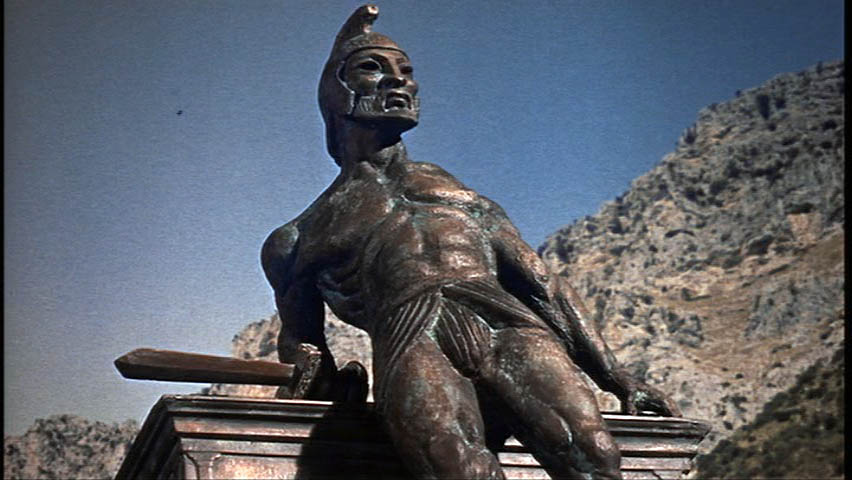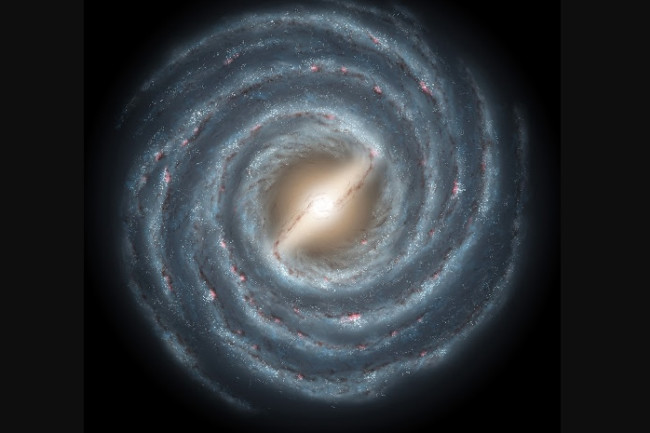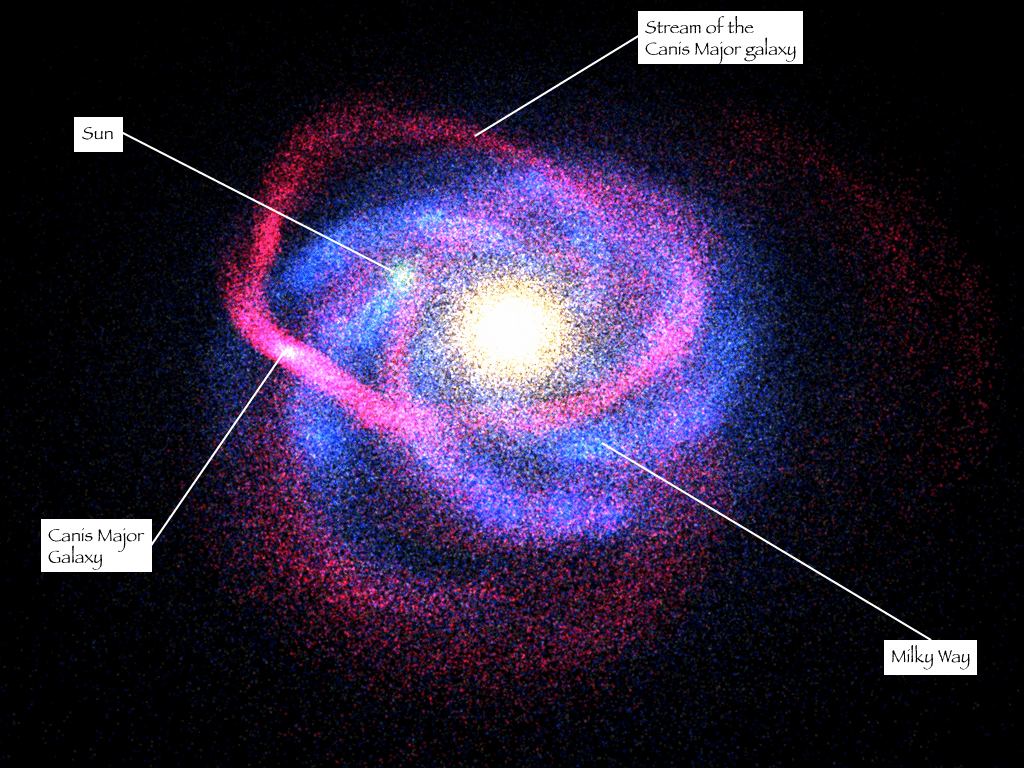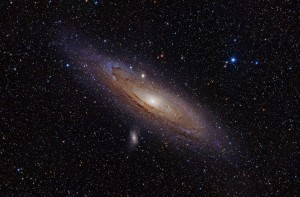Julian Date: 2459108.16
2020-2021: XII
THE DAILY ASTRONOMER
Wednesday, September 16, 2020
Remote Planetarium 90:History and Future of the Milky Way Galaxy
The above image could make one regard the galaxy as a placid pinwheel rotating lethargically around a bright, barred center. This apparent placidity -itself, an illusion- belies the galaxy's true nature. It is a dynamic, ever changing system of more than 300 billion stars that revolve around the nucleus in rapid, undulating orbits. It currently measures 100,000 light years in diameter and, except for the grand spiral Andromeda, is the largest member of the Local Group of Galaxies.
How did it become such an immense system consisting of myriad stars? Answering this question necessitates a trip into the far distant past, more than 13 billion years ago. Cosmologists believe that the cosmos began in a single event dubbed "the Big Bang" about 13.8 billion years ago. This event gave rise to all the space, time, matter and energy that now comprise the Universe. Initially, only super-hot radiant energy pervaded the cosmos. Approximately 380,000 years after the Big Bang, the Universe cooled to 3000 K (2,727 degrees C). Atomic nuclei captured electrons to create the first neutral atoms, principally hydrogen and helium. Matter and radiation separated. The radiation was released as a powerful flash that is now detectable throughout the Universe as the Cosmic Microwave Background Radiation.
The material Universe consisted of vast clouds composed of hydrogen and helium. Had the density of this material been perfectly uniform, the cosmos might have remained nothing more than light element clouds. However, regions of slightly greater density were scattered throughout the Universe. Around these regions matter began to accumulate. These were the nuclei of the first galaxies. Material within the primordial galaxies also developed pockets of slightly greater density. The pockets become more massive and thus were able to attract more material due to their increased gravitational strength. About 560 million years after the Big Bang the first stars formed. These first stars were gathered in clusters that often merged to create larger stellar structures. Vast collections of gases collected around these stellar amalgamations. Small dwarf galaxies were well established. These dwarfs often collided and combined to create larger galaxies that, themselves, conjoined to form even larger structures.
The Galaxy grew larger and formed spiral arms which contained the greatest concentrations of stars and other materials. These spirals radiated away from the nucleus, a region harboring a supermassive black hole and a wide "bar" of stars . The black hole, likely an amalgam of smaller black holes, is four million times as massive as the Sun. All spiral and elliptical galaxies are believed to have a supermassive black hole at their centers.
As we will see next week when we progress to the level of galactic clusters, the Milky Way became part of the Local Group, a system consisting of approximately 54 galaxies. Many of its members are dwarf galaxies that will likely become incorporated into the larger spirals. In fact, the Milky Way Galaxy is currently absorbing smaller galaxies such as the Canis Minor Dwarf, a galaxy containing about one billion stars. The image above shows a simulation of this absorption. Notice that the Canis Minor Dwarf Galaxy is being reduced to a stellar stream like many of the others that surround the Milky Way.
The Milky Way Galaxy will continue to grow as it cannibalizes other dwarf galaxies. The major event, though, occurs in 4 - 6 billion years from now. The Milky Way and Andromeda Galaxies are scheduled to "collide" and eventually merge to create a mega-galaxy containing nearly one trillion stars. The word "collision" is somewhat misleading for one should not regard the encounter as being similar to the collision of two solid objects. The galaxies will approach each other, merge and then separate before eventually slowing down and colliding again, only to separate again prior to another collision, Eventually, the galaxies will finally conjoin into one system.
Refer to this Milky Way-Andromeda collision simulation on You-tube:
(Our apologies in advance for the political attack ads that will most assuredly precede the simulation. A contrived collision prior to the natural one.)
Our home galaxy will still persist for billions of years after this merger and will likely experience other collisions, albeit not as dramatic as the one with the Andromeda Galaxy. Trillions of years in the future the last stars will flicker out. By that time, the Milky Way Galaxy will consist of stellar remnants in orbit around the central black hole that, itself, will persist for trillions upon trillions of years more before eventually evaporating through the emission of Hawking radiation.
We can be well assured, however, that our beloved Milky Way will remain part of the Universe for quite some time to come.
To subscribe or unsubscribe from the Daily Astronomer:




